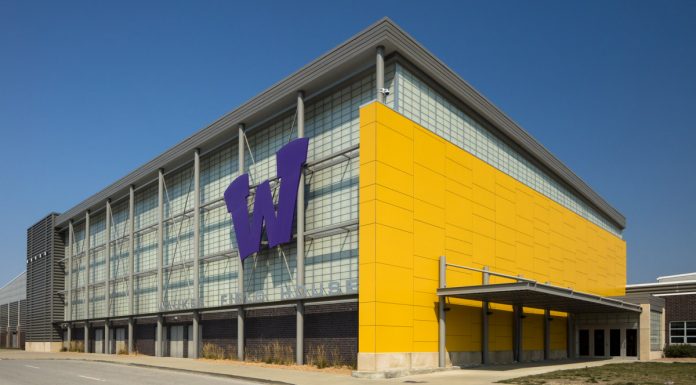I want to give you an update on the watershed private property rights issue of our time: the carbon capture pipeline issue.
No other proposed project like it in my lifetime.
No brazen violation of the Constitution’s private property rights like it in my lifetime either.
Active Legislation
Since no legislation is moving in the Senate addressing the use of eminent domain (in spite of the fact that other legislators and I introduced it and advocated with Senate leaders), I will discuss a bill that passed the House last week 86-7, and is now coming to the Senate.
It is HF 2664. It provides that when the Iowa Utilities Board (IUB) considers whether private property should be subject to the power of eminent domain, that the affected landowner can petition to the court to determine if it would be a constitutional exercise of the power of eminent domain. This would have to be done before the Board makes its final decision. This is so landowners would have the chance to avoid much time and effort being spent on preparing for and participation in weeks and months of hearings. A decision of the court could be made ahead of proceedings. However, it should be noted this does not prevent landowners from bringing a lawsuit after a Board decision regarding the use of eminent domain is made.
An amendment proposed to that bill would repeal the requirement that a bond be posted to appeal a decision of the Iowa Utilities Board regarding the exercise of the power of eminent domain. It would probably be harder for individual landowners to come up with the money for a bond than it would be for a company. This is important if a decision comes from the IUB allowing the use of eminent domain because landowners will surely want to appeal that decision.
The Iowa Utilities Board still has not made a decision regarding the exercise of eminent domain for Summit to build the carbon capture pipeline. A decision could come at any time. So it is really important for swift action by the Senate and governor regarding this bill. Please contact your senator and the governor’s office urging their support for this bill.
It is so disappointing that after having had ample opportunity to act to protect landowner private property rights, that the lack of action has brought us to this point of desperation.
Water Issues
You might wonder: why are there water issues with carbon capture pipelines? What does water have to do with carbon capture?
Well, it turns out, a lot. The process to capture CO2 and pressurize the gas into a “super-critical” state, or liquid, creates a lot of heat. Water is required for cooling systems for this process.
It also turns out that not just a few gallons are needed but millions of gallons a year will be needed. Each ethanol plant that hooks up to a pipeline will need millions of gallons of water annually. The DNR has already approved a permit for Summit to withdraw 56 million gallons of water annually for an ethanol plant near the city of Lawler, which is in my district. Sounds like a lot, and it is. But for comparison sake, consider the fact that, the ethanol plant near Lawler has a permit for 681 million gallons annually (without the pipeline). Plus, according to DNR Water Quality Environmental Engineer Michael Anderson, the city of Lawler uses about 15 million gallons annually. That doesn’t count surrounding rural dwellers. So the pipeline ask is not insignificant.
There is now pending at the DNR a second request by Summit to withdraw 28 million gallons of water annually for an ethanol plant near the city of Goldfield. Summit has filed for water withdrawal permits for 11 other ethanol plants which near cities scattered along its proposed route in Iowa.
Water will be needed at every ethanol plant the Summit CO2 pipeline must hook up to. Summit is planning to hook up to 30 ethanol plants in Iowa (57 in total in the Midwest). Estimates vary widely of the total water usage needed from 500,000,000 gallons annually to 1 billion gallons annually. So the cumulative effect of 30 “not insignificant” requests for water usage could end up being substantial. In a meeting with the DNR Water Quality Bureau, Michael Anderson acknowledged that the total ask would be quite large and he could not say for sure if it would be too big a drain on Iowa’s aquifer resources. Not very reassuring.
A further issue complicating this is the fact that most of Iowa is in drought conditions with nearly one half of the state in severe to extreme drought. Media reports are of a few areas in Iowa where towns are running low on water and currently there is a mandatory water conservation order issued for the Tama System and the Amana System, areas served by Poweshiek Water Association in Poweshiek County. In Floyd County, which is in my district, the Board of Supervisors is putting a water request by Valero, the Charles City ethanol plant (newly added in Summit’s expansion), on hold until further study and investigation due to water usage concerns, especially in light of the drought in our area.
I don’t know how this additional draw by Summit on the state’s water supply can help but be harmful. I believe more investigation and better determinations certainly do need to be made before the Summit carbon capture project is allowed to move forward, if it is even allowed due to other considerations.
Alternatives to Carbon Capture Pipelines
The question must be asked: are there financially viable alternatives for ethanol plants other than carbon capture pipelines? The answer is: There very possibly might be.
Now I believe the drive toward making industries “low-carbon” is pretty foolish given the fact that carbon dioxide is perfectly harmless in its naturally occurring state. The drive toward “low-carbon” is only due to pressure from the federal government which I believe is unnecessary, oppressive, and tyrannical. Case in point: they are threatening the ethanol industry that unless it produces “low-carbon” fuel, it will not qualify to be a producer of sustainable aviation fuel (SAF).
However, on the bright side, there is a market for carbon dioxide and some ethanol plants are taking advantage of that by capturing their CO2 and turning it into dry ice and selling that as a product in the market. But the ethanol industry produces too much CO2 to use for dry ice.
This is where the possibility of converting the CO2 to green methanol comes in. According to Jeff Bonar, president of CapCO2 Solutions, green methanol is used in thousands of everyday products, including insulation, gutters, roofing, paints, carpets, tires, plastics, fertilizers, cosmetics, and even Lego bricks.
One of green methanol’s biggest uses is as shipping fuel. When it is burned, it adds no new C02 to the atmosphere, making it a net-zero fuel. Green methanol burns with no waste products, and even if spilled causes no environmental damage. In addition to replacing carbon-intensive traditional methanol in consumer products, green methanol can easily be used as a transportation fuel because conventional diesel engines can be inexpensively modified to run on green methanol.
CapCO2 Solutions manufactures the technology and the equipment to produce green methanol. According to the latest issue of the Farm Bureau Spokesman, an ethanol plant in Illinois is installing this green methanol production system. It will capture the plant’s CO2 and convert it to green methanol.
If this turns out to be financially and practically feasible as it appears it might be, that would be a realistic possibility for Iowa’s ethanol plants as it would make the ethanol “low-carbon” and of course the green methanol would be “low-carbon”.
This could be the ethanol industry’s end-run around the federal government’s tyrannical demands as well as Summit Carbon’s tyrannical demands.
And it does not require damaging farmers’ carefully laid patterned drainage tiling systems.
It does not require public exposure to the possible health and safety risks of a CO2 pipeline.
And above all, it does not require the unconstitutional and unlawful exercise of eminent domain against unwilling farmers and landowners.
Senate Action
Budget Target: The Senate released our budget target for FY 2025 this week. It is at $8.9 billion, just a little under the governor’s amount. That amount is a 3.74% increase over this year’s budget. It will be divided up between 10 smaller budgets.
AEA Reform Bill: This bill has passed the House and the Senate and has been signed by the governor this past week. It went through yet another change, a compromise between the House, Senate and governor versions.
Very briefly, the bill mandates school districts spend their special education funding with the AEA. However, the media services and general educational services funding by year 2 would remain 100% with the school districts.
Accountability and oversight of special education and professional development will move to the Dept. of Ed. AEA Chief administrators’ salary is capped. There will be a task force to review AEA-owned property and make recommendations.
Wrapped up in this bill was the School Supplemental State Aid, which was set at 2.5%, an increase of $223 million of new money for a total of about $3.8 billion for K-12 schools.
Also, part of the bill was raising the minimum teacher salary to $47,500 in the first year and next year it will be $50,000. For teachers with 12 years of experience the minimum salary is $60,000 the first year, and $62,000 after that. This is implemented through the Teacher Salary Supplement so it will continue going forward.
As before, I did not support this bill, but because I was sick and home this past week I was not able to vote on it. Again, while I understand and support the governor’s concerns with costs, efficiency, and oversight, I also want to ensure schools and the AEA’s know they will be able to provide all the services students, special ed and general ed, are currently receiving, if not better, under the present system before the funding gets changed. But I did not have that assurance with this bill.













A Senator standing up for the PEOPLE, THANK YOU SANDY!!!